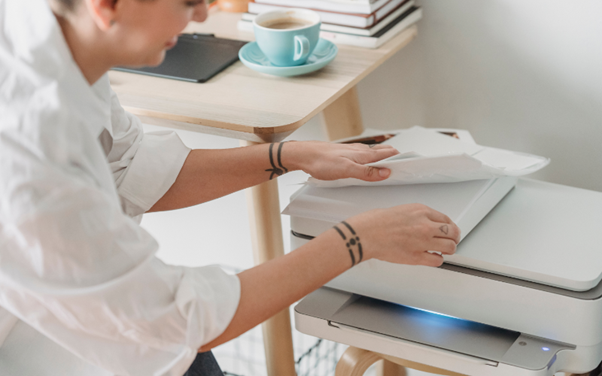The selection of a printer will be significantly crucial if the nature of the print is to be art. Being acquainted with the differences between laser and inkjet printers becomes one critical factor that plays a role in my decision. This article compares important features of the two to enable you to choose the best-suited art print among the two.
Detailing and Accurate
In the quest for perfection in printing, the inkjet printer stands out in this regard. They guarantee good detail with lively colours, hence very appropriate for reproducing quality images. The mode of operation of the inkjet printer sprays tiny droplets of ink right onto the paper, which then enables a finer line of accuracy in blending the colours. It produces tones with smooth gradients and minute details, very convenient for large complex artworks.
In contrast, laser printers use toner, which is a powdered substance fused to the paper through heat. It is quick but, in some respects, does not manage the same fine quality as the inkjet printer, especially for printing complicated images or fine colour changes. Yet laser printers are very good with fine text or simple graphics, such as those that need fine lines rather than detailed, coloured work.
Colour Vibrancy and Range
Where vibrancy is considered, colour with inkjet printers typically outshines that of laser printers. The liquid ink used by an inkjet printer covers a wider range of spectrum and gives a more vivid print. This becomes quite critical for an artist who works with a wide range of hues and would need the print to accurately bring out the original work. The richness in colour provided by an inkjet printer makes it preferred for fine art prints, photography, and any other projects where colour depth is paramount.
Whereas laser printers are incapable of producing the same saturation of colour. Even though they can make very bright colours, they usually do not have as wide a range compared with that on an inkjet printer that you would have. It is a significant consideration when you need nuanced shades and vibrant tones within your art.
Print Longevity and Durability
Perhaps the most significant issue concerning art prints is their durability, especially for long-term display or sale. Most inkjet prints are very vulnerable to water damage and smudging, particularly if they were printed on low-grade uncoated paper with inks not consisting of pigments. In a professional inkjet printer, pigment-based inks are more resistant to fading and water damage than dye-based and hence would be the better of the two to use in creating an archival print.
Laser prints also have a longer life compared to other types of printing materials. The pages printed are much less prone to smudging both during the day and when wet. This therefore makes it a great solution for those items that need a bit of extra durability. Things like posters or outside display prints come to mind. The heat-fusing process ensures that the toner bonds well with the paper, resulting in prints that can be more resistant to handling and environmental factors than many inkjet prints.
Cost Efficiency
Cost is a big factor for many artists, especially when running off several prints. Laser printers are generally more cost-effective in the long run, especially for those who print large volumes. The upfront charge of a laser printer and its toner cartridges is much higher, but the cost per page difference is generally much lower compared with most inkjets. This way, huge volumes of prints are required without any compromise on sharpness and sturdiness, which will save the artist’s costs.
Although they afford the superior quality of colours, their maintenance may be expensive by way of ink cartridges available in the market. Inkjet printers are best for artists who always print their work in colour; the cost of replacement ink may increase. Also, printers that use ink tend to consume much of it, meaning more money spent. For an artist whose priority is colour accuracy and detail, the cost might be worth the investment, especially with the prospect of limited edition prints or with pieces that demand colour fidelity.
The other thing is the speed at which you can produce the prints; the speed of a laser printer is better than an inkjet printer, especially in printing large quantities. This speed advantage can be vital for an artist or designer working on tight deadlines or who needs to create prints at the drop of a hat.
Inkjet printers, on the other hand, are slow but offer advantages due to the high quality of the output that extra time creates; it is worth it for art prints with intricate detail. In contrast, if your work has almost always got to be done toward the fastest possible turnaround yet you still wish to maintain an acceptable level of print quality, consider your workflow and whether speed might not be more important to your process.
Ultimately, the decision on whether to use a laser or an inkjet printer for making your critical art prints comes down to priorities: be they in minute detail, vivid colour, durability, cost, and speed. Both have their strengths, and the best choice varies with the individual needs and priorities of the artist. Whether you appreciate the minutest of details and lively colours that inkjet printers are capable of, or the speed and resilience that laser printers provide, a proper choice will ensure that your prints meet the best standards.
Contact Harvey Norman Malaysia today and invest in a printer that will heighten your creative vision and process to take your art printing to the next level!










